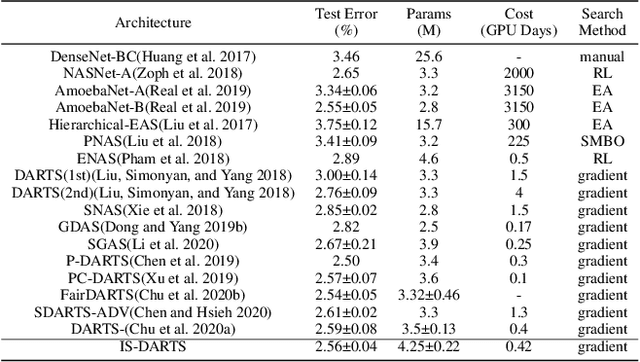IS-DARTS: Stabilizing DARTS through Precise Measurement on Candidate Importance
Paper and Code
Dec 19, 2023



Among existing Neural Architecture Search methods, DARTS is known for its efficiency and simplicity. This approach applies continuous relaxation of network representation to construct a weight-sharing supernet and enables the identification of excellent subnets in just a few GPU days. However, performance collapse in DARTS results in deteriorating architectures filled with parameter-free operations and remains a great challenge to the robustness. To resolve this problem, we reveal that the fundamental reason is the biased estimation of the candidate importance in the search space through theoretical and experimental analysis, and more precisely select operations via information-based measurements. Furthermore, we demonstrate that the excessive concern over the supernet and inefficient utilization of data in bi-level optimization also account for suboptimal results. We adopt a more realistic objective focusing on the performance of subnets and simplify it with the help of the information-based measurements. Finally, we explain theoretically why progressively shrinking the width of the supernet is necessary and reduce the approximation error of optimal weights in DARTS. Our proposed method, named IS-DARTS, comprehensively improves DARTS and resolves the aforementioned problems. Extensive experiments on NAS-Bench-201 and DARTS-based search space demonstrate the effectiveness of IS-DARTS.
 Add to Chrome
Add to Chrome Add to Firefox
Add to Firefox Add to Edge
Add to Edge